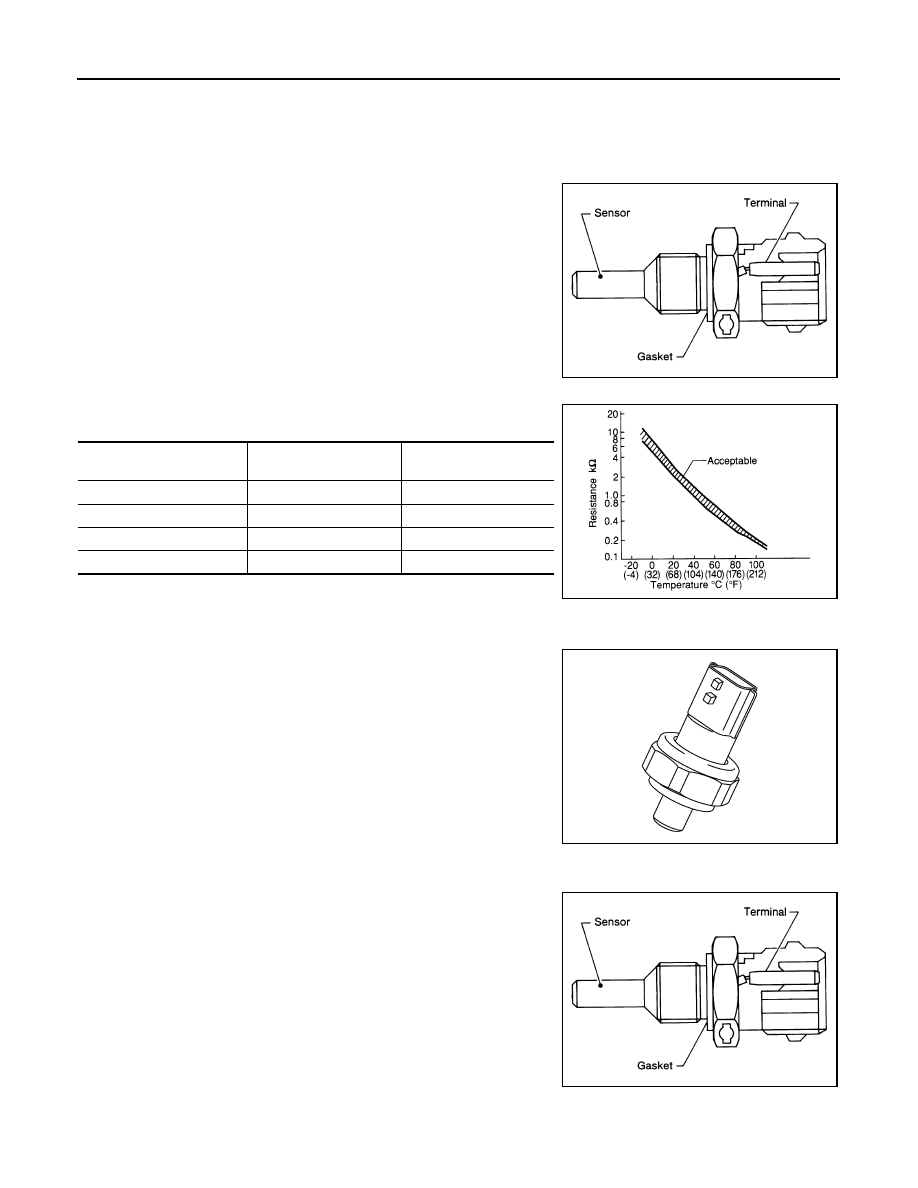Nissan Pathfinder. Manual - part 429

EC-22
< SYSTEM DESCRIPTION >
[VQ35DE]
COMPONENT PARTS
In the driving range, ECM turns ON the electronically-controlled engine mount control solenoid valve and cuts
manifold pressure applied on the electronically-controlled engine mount. This increases damping force of the
electronically-controlled engine mount and reduces vibrations generated during driving.
Engine Coolant Temperature Sensor
INFOID:0000000009178013
The engine coolant temperature sensor is used to detect the engine
coolant temperature. The sensor modifies a voltage signal from the
ECM. The modified signal returns to the ECM as the engine coolant
temperature input. The sensor uses a thermistor which is sensitive to
the change in temperature. The electrical resistance of the ther-
mistor decreases as temperature increases.
<Reference data>
*: These data are reference values and are measured between ECM terminals.
Engine Oil Pressure Sensor
INFOID:0000000009178014
The engine oil pressure (EOP) sensor is detects engine oil pressure
and transmits a voltage signal to the ECM.
Engine Oil Temperature Sensor
INFOID:0000000009178015
The engine oil temperature sensor is used to detect the engine oil
temperature. The sensor modifies a voltage signal from the ECM.
The modified signal returns to the ECM as the engine oil tempera-
ture input. The sensor uses a thermistor which is sensitive to the
change in temperature. The electrical resistance of the thermistor
decreases as temperature increases.
SEF594K
Engine coolant temperature
[
°C (°F)]
Voltage
*
(V)
Resistance (k
Ω)
–10 (14)
4.4
7.0 - 11.4
20 (68)
3.5
2.37 - 2.63
50 (122)
2.2
0.68 - 1.00
90 (194)
0.9
0.236 - 0.260
SEF012P
JSBIA0292ZZ
SEF594K